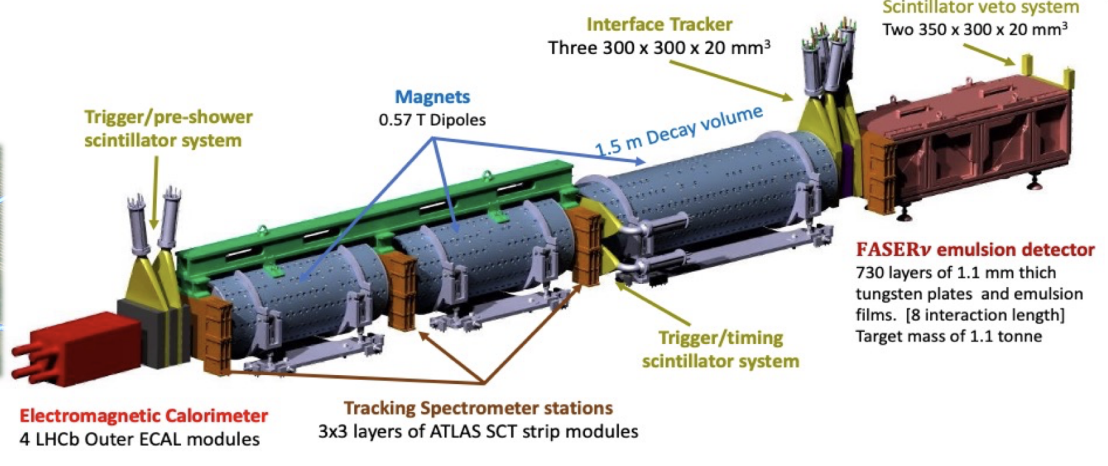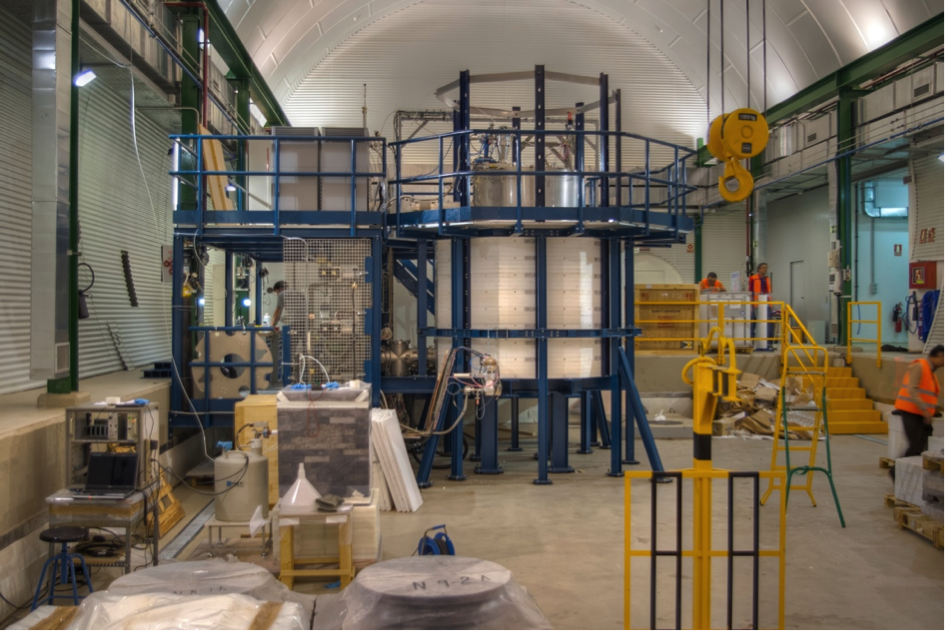Dark Matter (FASER, ArDM-DArT)
What is the Dark Matter composition ? Astronomical observations give strong evidence for the existence of non-luminous and non-baryonic matter, presumably composed of a new type of elementary particle. A possible candidate is the Weakly Interacting Massive Particle (WIMP). If they exist, WIMPs should form a cold thermal relic gas, which could be detected via elastic collisions with nuclei of ordinary matter. The detection of these WIMPs is based on the capability of measuring the recoils of target nuclei with kinetic energy in the range of 10-100 keV. The signal is therefore quite elusive and is expected to be a rare event given the weak coupling between WIMPs and ordinary matter.
Dark matter could potentially be composed of particles other than WIMPs, which have long been a leading candidate in dark matter theories. One alternative hypothesis involves feebly interacting particles (FIPs), a broader class of particles that interact even more weakly with normal matter than WIMPs.
The concept of FIPs includes a variety of hypothetical particles, each with unique characteristics and ways of interacting (or not interacting) with regular matter and forces.
FASER at CERN

external page FASER, the ForwArd Search ExpeRiment, is designed to search for new, yet undiscovered, light and weakly-interacting particles and study the interactions of high-energy neutrinos.
New, light particles may be constantly produced in large numbers in proton-proton collisions at the LHC, but still avoid detection. This is because, once produced, such particles go along the proton beam collision axis, where there is no experiment that can detect them in a low-background environment. The background from the interactions of well-known standard model particles needs to be highly suppressed when looking for the rare events associated with new physics particles. On the other hand, new, light, and long-lived particles can easily travel for hundreds of meters without interacting, and then decay to standard model particles, for example, electron-positron pairs, at a distant position well-separated from such background.
Neutrinos are among the least understood particles in the standard model of particle physics, and the experimental study of their interactions, especially at high energies, can have exciting implications for many areas of research. A dedicated subdetector of FASER, dubbed FASERν, which operates in front of the main FASER detector, has been designed to record thousands of such interactions and explore this new high-energy collider neutrino frontier of particle physics.
To explore this far-forward region of the LHC, FASER will be located in the unused LHC service tunnel TI12, which is 480m downstream of the proton-proton interaction point (IP) used by the ATLAS experiment. The fluxes of most high-energy standard model background particles at this position are suppressed to negligible levels, with the only exceptions being the most penetrating known particles, namely muons and neutrinos. The FASER detector will be sensitive to new particles that decay in a cylindrical volume with radius R=10 cm and length L=1.5 m. The electron-positron pairs produced in such decays will be deflected by strong permanent magnets, and their curved tracks will be seen in the FASER spectrometer. They will also deposit their energy in a calorimeter placed downstream of the magnets.

DArT in ArDM

The DarkSide-20k dark matter search experiment plans to operate a dual-phase time projection chamber with 50 tonnes of radio-pure underground argon (UAr). Our ArDM detector has up to now used Atmospheric argon (AAr). This latter has a naturally occurring radioactive isotope, 39-Ar, a β emitter of cosmogenic origin, which becomes a limiting background to search for WIMPs in a large detector as the foreseen DarkSide-20k. The use of argon extracted from underground wells, deprived of 39Ar, is key to the physics potential of these experiments. Assessing the 39Ar content of the UAr during extraction is crucial for the success of DarkSide-20k. This will be carried out by the DArT in ArDM experiment, a small chamber made with extremely radio-pure materials that will be placed at the center of our ArDM detector, located in the Canfranc Underground Laboratory (LSC) in Spain.